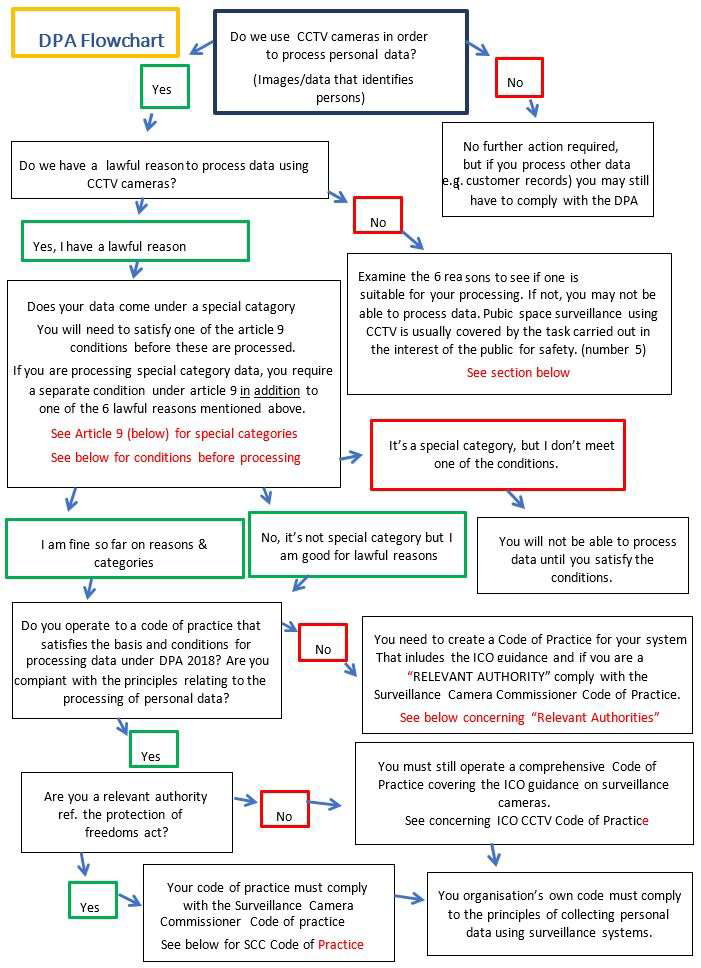
CCTV DPA (Data Protection Act) Flowchart

As the use of Closed Circuit Television (CCTV) becomes increasingly common in both public and private spaces, it is important for organizations to consider the data protection implications of CCTV usage.
Under data protection laws, organizations have an obligation to process personal data in a fair, transparent, and lawful manner. This includes the use of CCTV. Organizations must ensure that the use of CCTV is necessary and proportionate to achieve their legitimate interests, such as preventing crime or protecting property.
Organizations must also provide clear and prominent signage informing individuals that CCTV is in operation, along with the identity of the data controller responsible for processing the data. Furthermore, organizations must ensure that CCTV footage is securely stored and only accessed by authorized personnel with a legitimate need to access it.
In addition to these obligations, data subjects have rights under data protection laws. This includes the right to be informed about the processing of their personal data, the right to access CCTV footage that contains their personal data, the right to have their personal data erased, and the right to object to the processing of their personal data in certain circumstances.
It is important for organizations to be aware of these obligations and rights to ensure they are using CCTV in compliance with data protection laws. By doing so, organizations can protect individuals’ privacy rights and avoid potential legal consequences and reputational damage.
Disclaimer – This post has only been shared for an educational and knowledge-sharing purpose related to Technologies. Information was obtained from the source above source. All rights and credits are reserved for the respective owner(s).
Keep learning 📚 and keep growing 📈
Source: LinkedIn
Credits: Mr. Adeyemi O. Owoade







